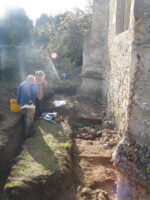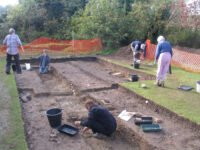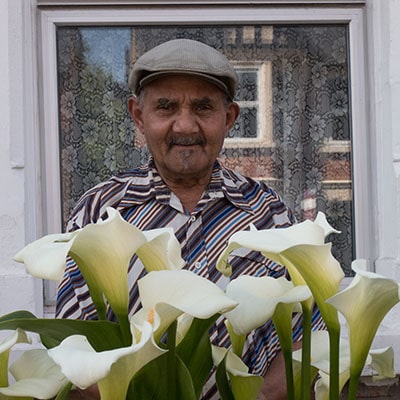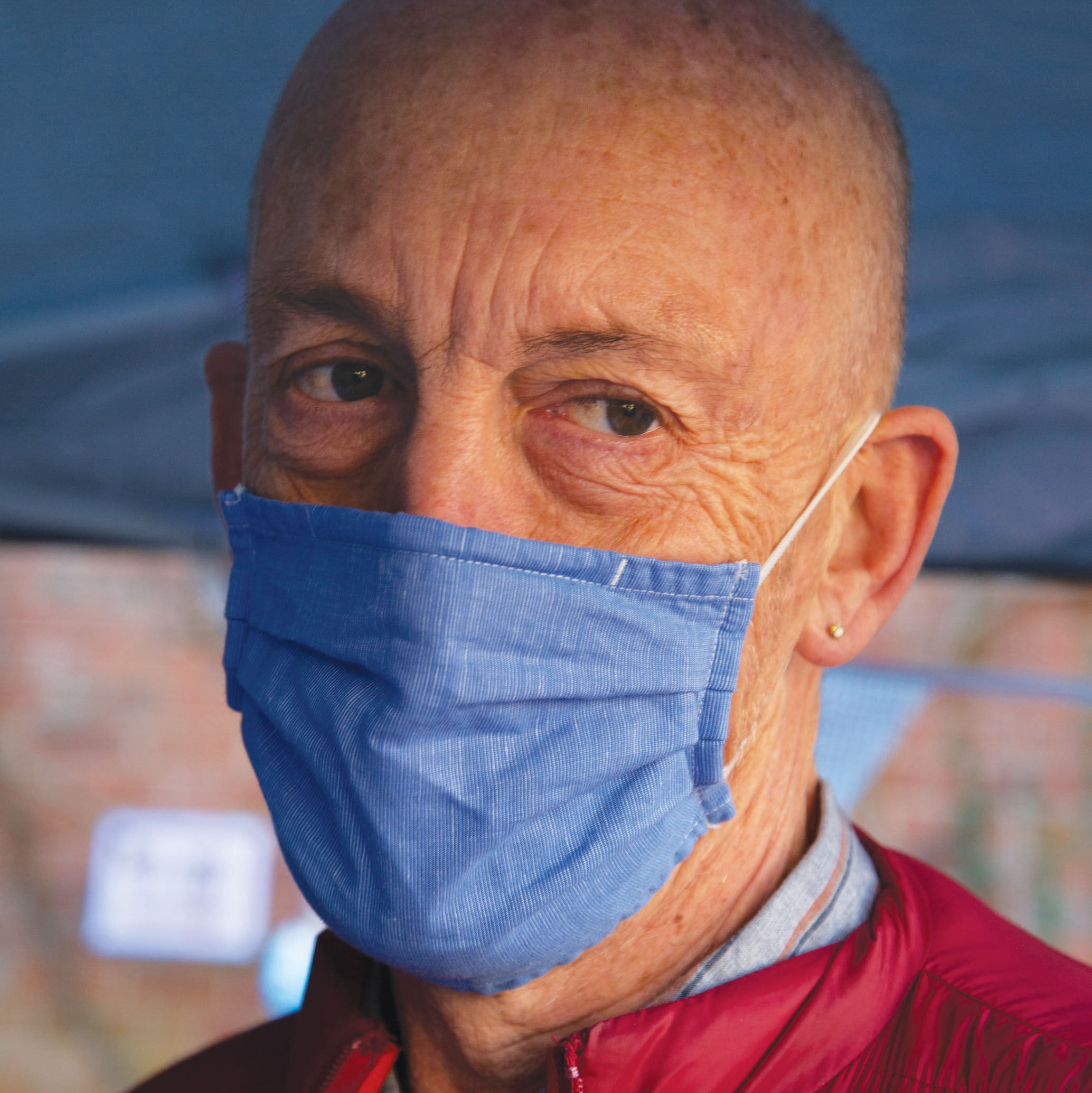Digging the dirt: the archeology of East Oxford
‘The Archeology of East Oxford’ records the results of a programme of archeological work carried out in East Oxford,defined as ‘Oxford-east-of-the-Cherwell’, between 2010-2015. The area is full of interesting historical and archeological sites but as the introduction puts it:
‘External perceptions are, however, often of a mundane and unexciting nature; that Oxford’s sprawling eastern districts are ‘ordinary’ or ‘industrial’ and are eclipsed to the point of disregard by the majestic architecture of the city’s academic core. Guidebooks to Oxford, mostly unwilling or unable to see beyond the cloisters, rarely mention the city’s eastern districts. Yet any visitor who leaves the city-centre tourist trail behind and crosses Magdalen Bridge, will discover an eclectic and vibrant area with a deep and fascinating history.’ (p 1)
David Griffiths, Jane Harrison and over fifty other named contributors, attempt to put this right. In doing so they are putting themselves out on a limb. Richard Bradley, an East Oxford resident and emeritus Professor of Archeology at Reading University who provides a Foreword is direct, saying:
‘Archeologists, particularly those in English universities have isolated themselves for far too long, conducting their projects without much contact with communities in the places where they work. Archeox offers another way of working, and a very good one.’ (p xv)
The book draws together both its archeological investigations and pre-existing knowledge about the history of the locality, to create an holistic picture of a location and landscape that has never been studied in this way before. It is divided into seven chapters. Some of these are about archeological excavations, including those at St Bartholomew’s (Bartlemas) Chapel off Cowley Road (pictured) and at Minchery Paddock (Littlemore Priory) on the edge of Blackbird Leys, East Oxford’s two most important medieval religious sites; and also at the Donnington Recreation Ground between the Iffley Road and the river. They cover the seventy-two test pit excavations and related geophysical surveys done during this period, including a fascinating review of the earthworks and evidence of ridge and furrow cultivation to be found in South Park. The other chapters include an introduction to East Oxford both sociological and archeological; howinvestigating a suburban landscape was carried out, and a chapter on the historic place names and historic landscape of east Oxford.
(pictured) and at Minchery Paddock (Littlemore Priory) on the edge of Blackbird Leys, East Oxford’s two most important medieval religious sites; and also at the Donnington Recreation Ground between the Iffley Road and the river. They cover the seventy-two test pit excavations and related geophysical surveys done during this period, including a fascinating review of the earthworks and evidence of ridge and furrow cultivation to be found in South Park. The other chapters include an introduction to East Oxford both sociological and archeological; howinvestigating a suburban landscape was carried out, and a chapter on the historic place names and historic landscape of east Oxford.
Within these chapters the authors range widely and this becomes both a strength and a weakness. Chapter 1, ‘Introducing East Oxford’ takes geographical, historical and sociological approaches. A rapid canter through the history of the area from prehistoric times to 1900 is supplemented by a topographical and landscape review with plenty of maps, one of the book’s great strengths; a history of archeological research in the area (not very lengthy), supplemented with what are described as ‘research questions for a community investigation’; and a series of what seem like rather random essays on various archeological ‘objects trouve’ discovered in the area from the 19th century onwards, such as the Leopold Street and Burgess Meadow Bronze Age Hoards, the Early Medieval Weapons from the River Cherwell at Magdalen Bridge and the Bell Collection of Stone Tools with a mini-biography of their collector himself, Alexander Montgomerie Bell. All this is shoe-horned into a chapter whose introduction ‘What and where is East Oxford?’ is an attempt at contemporary contextualisation and which has a journalistic quality to it with some amusing flourishes and interesting insights. Unfortunately Chapter 2 ‘Archeox: the emergence of a community’ tries to do the same thing, only in a more jokey fashion: ‘The area’s most common self-image is one of diversity and informality, coupled with a concern for the environment. Cycling and indeed recycling are popular!’ (p 33) As the current hostility towards the Low Traffic Neighbourhoods being installed across the area demonstrates, this is a rather sweeping statement.
The authors are on more solid ground when discussing more disturbed ground, i.e. their archeological investigations. Chapter 4 ‘St Bartholomew’s (Bartlemas) Chapel surveys and excavations’ is a case in point, with some fascinating history of this leper hospital founded by Henry 1 in 1126, ably augmented with photographs both historic and contemporary, maps, plans, diagrams, isotopic data charts, reconstructions, and dramatic pictures of everything from well preserved skeletons to lead musket balls and medieval coins.  It paints an enormously rich tapestry of history, landscape, architecture, church history, myth, ritual and scientific excavation. More than fifteen people contribute to this chapter alone. The archeology is impressive, both in what it reveals, and in the way it is recorded, with detailed plans, elevations and photographs of the trenches dug, the finds made, and the staff and volunteers who brought it all to life. The finds are described in ways that readers can relate to:
It paints an enormously rich tapestry of history, landscape, architecture, church history, myth, ritual and scientific excavation. More than fifteen people contribute to this chapter alone. The archeology is impressive, both in what it reveals, and in the way it is recorded, with detailed plans, elevations and photographs of the trenches dug, the finds made, and the staff and volunteers who brought it all to life. The finds are described in ways that readers can relate to:
‘Some time after the current chapel was build a robust young man with an extremely good set of teeth was buried lying west-east and supine (on his back) with his head very close to the east end of the chapel: so taking another coveted location for burial, this time in close proximity to the altar.’ (p 129)
Known as SK1, stable isotope analysis of the bones of this skeleton revealed that as well as the usual diet of cereals, plants, and animals, he had probably eaten fish and perhaps shellfish. That would be significant in a location so far from the sea ‘..and led us to wonder if SK1 at least mayhave been either an official or a patron of the chapel.’ (p 130) The excavations at Bartlemas revealed information about the site and its uses well beyond medieval times. There is much evidence of the occupation of the hospital by Cromwellian forces during the English Civil War, including musket balls, clay pipes and sherds of drinking vessels likely to have been used by occupying soldiers as they besieged the city. Its more recent history as a farm also emerged, including evidence of small agricultural buildings and ‘…a good deal of animal bone, which showed a considerable amount of mutton in particular was being eaten.’ (p 133) The activities in this latter period are confirmed by photographs taken by Henry Taunt around 1900 and reproduced in the text. The main archeological report-cum-history of the site in this chapter is supplemented by five further sub-reports on aspects of the Bartlemas story. These essays stretch the reach of the research and excavation quite a long way beyond Bartlemas or East Oxford. The essay on leper hospitals ‘Leper hospitals, lepers and leprosy’ for example, examines contemporary attitudes to sufferers, looks at what the 300+ leper hospitals in England actually did and the lifestyles of both the lepers and their wardens, and draws some tentative conclusions about the Bartlemas site which is an unusually well preserved former leper hospital; Bartlemas Farmhouse probably being the successor to some of the hospital’s domestic accommodation. But this rigorous approach is not followed consistently. The essay ‘Bartlemas: its chapel, hospital and landscape’ while fascinating and informative in the way it paints a picture of the area and the role of the hospital over time, seems in some parts to be speculation, or at least drawing firmer conclusions than the historical evidence allows. The problem from a historian’s perspective is that archeologists are not historians, and some of them assume that the history that they read is correct. It often isn’t, and this is particularly the case in a more marginalized community like East Oxford where much of what has been written has not been written from a ‘people’s perspective’. So while attempting to flesh out the story of East Oxford through the evidence from digs, test pits, and artefacts sheds valuable new light on the area over time, the supporting historical evidence is more sketchy and contested, not least because such a disproportionate amount of historical effort has been devoted to ‘the other side of the river’ and the evidence that does exist, has as a result, to do more heavy lifting that it can sometimes sustain.
Griffiths and Harrison in their concluding chapter ‘A changing landscape and community’ acknowledge some of these uncertainties: ‘Archeology is an open-ended process. Unlike the ‘hard’ sciences it very rarely produces definitive advances which change the world in one fell swoop……Mostly its contribution lies in the ‘middle ground’ of partial advances, when new data or interpretations dispense with some old theories or misconceptions, but produce yet more questions, ideas, possibilities, and ways forward. This is perhaps its greatest strength, the sense that archeological research is fundamentally a debate…’ (p 227) This complexity and uncertainty doesn’t produce a clear narrative, and the story of East Oxford over one thousand years was never going to be linear. What they and their fellow contributors have done in ‘The archeology of East Oxford’ is open our eyes to what is around us, explore some of what has been hidden, illuminate a sense of place in a place that has been overshadowed for centuries by its more glamourous and studied neighbour, and open up possibilities for residents to take more ownership of the story of the undoubtedly fascinating locality that they live in.
David Griffiths and Jane Harrison (eds), The archeology of East Oxford: Archeox: the development of a community, (Thames Valley Landscapes Monograph Volume 43), Oxford: Oxford Department of Continuing Education, 2020, 260 pp., £25 or free as downloadable e-book.
This review was first published online by The Oxfordshire Local Hstory Association in February 2023 and in Volume 11 of Oxfordshire Local History 2023.

